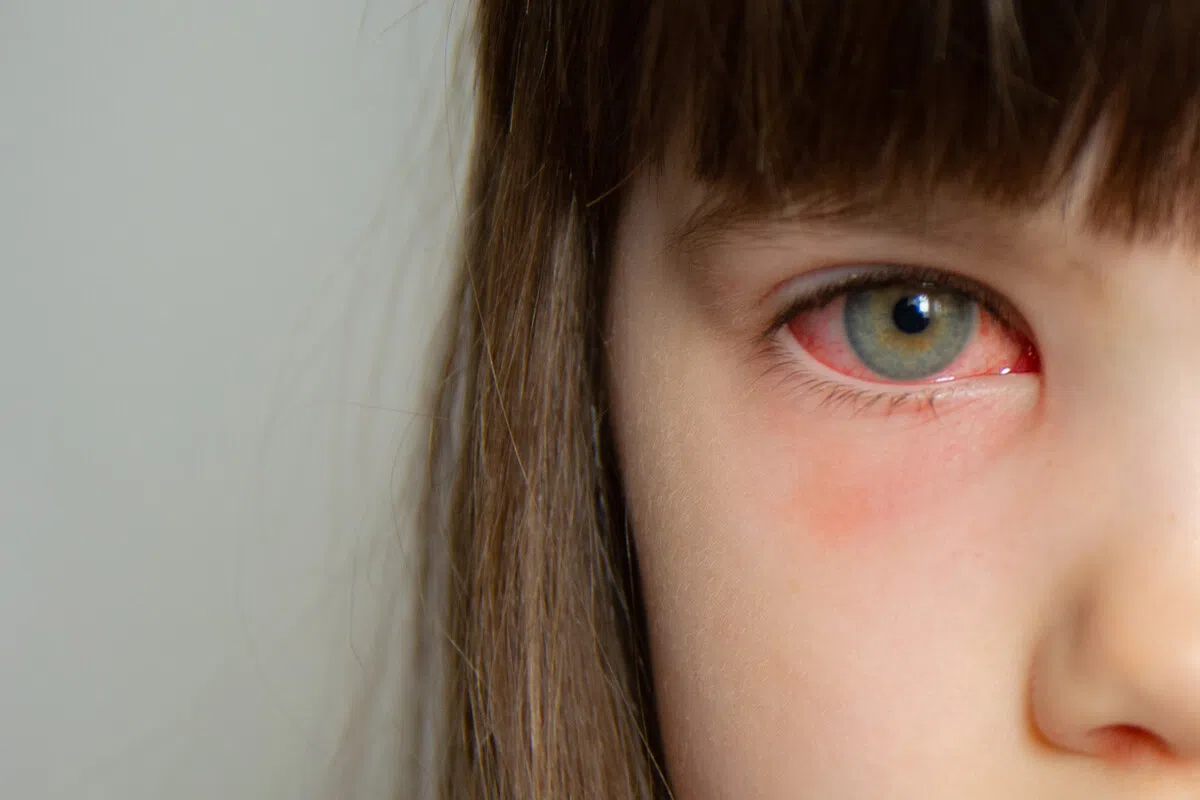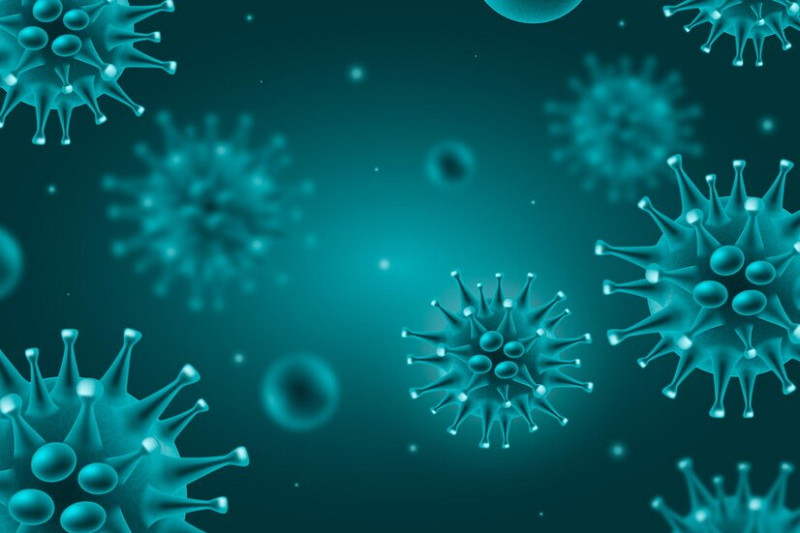What is Pink Eye? Common Causes and Prevention
Pink eye (conjunctivitis) is one of the most common eye conditions. It is usually not dangerous but can spread quickly in the community, especially during the rainy season – a time to pay close attention to eye disease prevention and refractive errors, particularly when the weather is humid or hand–eye hygiene is not maintained. Understanding the causes, symptoms, incubation time, contagious period, recovery time, and preventive measures will help protect the vision of you and your family.
What is Pink Eye?

Pink eye and its associated symptoms
Pink eye is the inflammation of the conjunctiva – the thin, transparent membrane covering the white of the eye and the inner eyelids. When inflamed, blood vessels dilate, making the eyes appear red, accompanied by irritation, tearing, and increased discharge.
Common Causes of Pink Eye
| Cause | Characteristics | Contagiousness |
|---|---|---|
| Virus (commonly adenovirus) | Easily breaks out in families, classrooms; may be accompanied by sore throat, mild fever | Very high, spread through droplets, hands, shared items |
| Bacteria (Staphylococcus, Streptococcus…) | Red eyes, thick yellow/green discharge, sticky eyelids in the morning | Moderate, spreads through towels, hands, objects |
| Allergies | Severe itching, watery eyes; often seasonal or upon allergen exposure | Not contagious |
| Environmental irritation | Caused by dust, chlorine, chemicals; often occurs after direct exposure | Not contagious |
Common Symptoms
- Red eyes, gritty sensation, feeling of dust in the eyes
- Obvious redness, swollen eyelids, sometimes small bumps on the conjunctiva
- Watery eyes, heavy discharge; eyelids stuck together in the morning
- Itchy eyes (especially in allergic types)
- Light sensitivity (glare, tearing in sunlight), temporary blurred vision
- May be accompanied by sore throat, mild fever, swollen lymph nodes near the ears (viral type), jaw pain, cough, nasal congestion, headache
It is important to note that these symptoms can be confused with more serious eye conditions such as corneal ulcers, acute glaucoma, or endophthalmitis. Therefore, it is advisable to see an eye specialist for an accurate diagnosis.
How Pink Eye Spreads

Pink eye can spread through airborne viruses
Pink eye caused by viruses or bacteria can spread very quickly, especially in crowded environments. Common transmission routes include:
- Respiratory droplets when in close contact with an infected person during coughing, sneezing, or talking
- Indirect contact by sharing towels, pillows, phones, toothbrushes, or other personal items of the patient
- Public surfaces such as doorknobs, desks, toys that may harbor pathogens
- Contact lenses that are not properly cleaned, allowing bacteria and viruses to adhere
- Eye rubbing with unwashed hands, or touching the nose and mouth, directly introducing pathogens into the eyes
In reality, in crowded places such as classrooms, offices, and dormitories, outbreaks of pink eye often increase significantly. According to the Ministry of Health, during outbreaks, infection rates can reach tens of percent within a small community, especially among children due to close contact habits and limited hygiene control.
Because of its high contagiousness, pink eye is classified as a disease prone to seasonal outbreaks. Preventive measures (frequent hand washing, avoiding shared personal items, limiting close contact during outbreaks) are just as important as treatment.
Quick Facts & Key Timelines
| Indicator | Reference Value | Practical Meaning |
|---|---|---|
| Incubation period (virus) | 1–3 days | Contagious before clear redness appears; vigilance needed when someone nearby has conjunctivitis |
| Contagious period (virus) | ~10–14 days from onset | Avoid sharing personal items; enhance hand–eye hygiene during the first 2 weeks |
| Typical recovery time | 7–10 days | Most recover with supportive care; monitor closely if it lasts longer |
| Type of discharge | Watery (virus/allergy) or thick yellow–green (bacterial) | Helps suggest the cause for appropriate treatment |
Note: The above timelines are for clinical reference. Doctors will adjust depending on severity, underlying conditions, age, and epidemiological context.
Is Pink Eye Dangerous?

Recovery time from pink eye varies by case
Most cases of pink eye are benign and self-resolve within 7–10 days. However, improper care (use of uncontrolled corticosteroids, wearing contact lenses while inflamed, poor hygiene) may lead to:
- Punctate keratitis, corneal ulcers
- Temporary or prolonged vision loss
- Rapid spread within families, classrooms, workplaces
Effective Ways to Prevent Pink Eye
1) Maintain hand–eye hygiene
- Wash hands with soap/hand sanitizer multiple times a day
- Avoid rubbing eyes; use clean tissues to gently wipe tears
2) Prevent cross-infection in families & schools
- Do not share towels, washbasins, eye makeup
- Wash bedding and towels with hot water if possible; dry in the sun
- Consider letting children stay home during early stages with heavy discharge and obvious redness
3) Protect eyes from triggers
- Wear glasses outdoors to reduce dust and wind; avoid swimming in unsafe water
- Avoid exposure to smoke, chemicals; follow workplace safety rules
4) Manage symptoms properly
- Clean eyes with 0.9% saline (single-use vials), keep discharge cleared
- Do not self-medicate with corticosteroid eye drops
- Visit an ophthalmologist if pain increases, vision blurs, light sensitivity worsens, or symptoms persist >10 days
Treatment of Pink Eye: Principles by Cause
- Viral: supportive care, eye hygiene, symptomatic medication as instructed; monitor progression for 7–10 days
- Bacterial: doctor-prescribed antibiotic eye drops; follow dosage and duration
- Allergic: avoid allergens, use prescribed anti-allergy medication; artificial tears may be combined

 vi
vi 10-Sep-2025
10-Sep-2025










 0916.741.763
0916.741.763 Appointment
Appointment